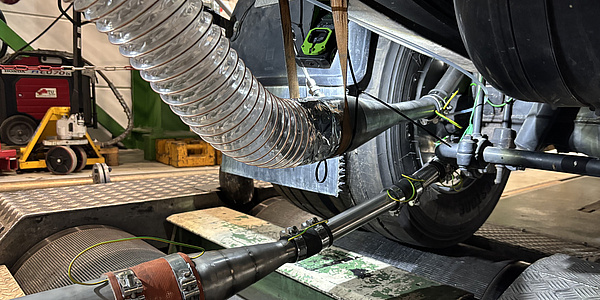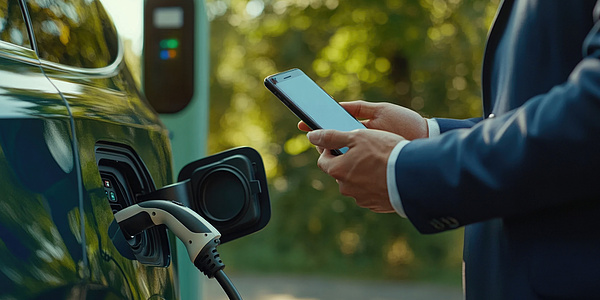Tips for E-Vehicle Safety in Summer

Are there any sources of danger in electric vehicles that come from the chemical processes going on inside the batteries?
Answer: Yes, electric vehicles typically use lithium-ion batteries, which undergo a chemical reaction during charging and discharging. In an ideal world, these reactions are close to 100 percent reversible and can be deemed safe as a result. This is down to the vehicle’s on-board electronic control systems. However, overcharging or deep discharging can lead to chemically unstable states or irreversible reactions, which pose a significant danger. The same applies when the battery ages, if micro-short circuits or gas accumulations occur, or if a short circuit is caused by mechanical damage – e.g. if the car is in an accident – or faulty control electronics. This generates a significant amount of heat, which in a worst case scenario can trigger thermal runaway. This is a kind of chain reaction involving extreme heat generation, gas and flame formation, or even explosions.
As a user, though, I don’t need to give it that much thought in everyday life because the vehicle’s battery is constantly monitored. As long as the vehicle is not involved in an accident that damages the battery, you can trust the manufacturers’ safety mechanisms.
Are there any protective mechanisms in place?
Answer: Yes, both chemical and technical.
Regarding technical protective measures: when batteries are operated within their “comfort zone,” there is no danger – or the risk is so low that we just end up referring to it more loosely as “no” risk. This zone is defined by the cell voltage, temperature, and charging speed, and the charge control system ensures it is not exceeded. This charge control technology is called the battery management system, or BMS for short. Some vehicles also have an active thermal management system that keeps the batteries within the correct temperature range – cooling them in summer and heating them in winter. If something does go wrong and they end up producing gas, it can be vented through pressure relief valves. Additionally, individual cells or cell packs can be isolated in case of any issues.
As a user, though, I don’t need to give it that much thought in everyday life because the vehicle’s battery is constantly monitored.
(Bernhard Gadermaier)
And as far as chemical protective mechanisms are concerned: the electrolytes contain flame-retardant additives and substances that provide overcharge protection. These include additives that are present in very small quantities, and often consumed during the initial charging cycles. They ensure that stable protective layers form within the cell. Known as the solid electrolyte interphase, these layers prevent side reactions. However, these layers mainly form during the very first charge-discharge cycles in battery production. Additionally, there are also polymers that change at higher temperatures, interrupting the flow of current.
How can I best protect the energy storage device in my electric vehicle?
Answer: Multiple levels of protection concepts are needed, extending from the materials in the cells to their actual use. The choice of materials, for example, has a bearing on the battery’s comfort zone and ultimately its range, weight, longevity, and cycle stability.
As a user, I should make sure that I primarily focus on gentle charging. This means not allowing the battery to drop to 0 percent and only rarely charging to 100 percent. The optimal charge level is between 20 and 80 percent. It is particularly important that the vehicle is not left to stand for extended periods with a 0 or 100 percent charge. Here, too, the guideline is between 20 and 80 percent. Additionally, fast charging should only be used in exceptional cases, and needs to be avoided especially when the vehicle is parked in direct sunlight. As a general point of order, the vehicle should not be left in the sun for long periods anyway. In extreme heat, it’s advisable to wait until the evening to charge or to look for a shaded spot. Ideally, the BMS can step in and compensate here as well, charging the battery more slowly or only up to a certain limit.
How do extremely high temperatures in summer affect the battery?
Answer: Temperature can start to have negative effects on lithium-ion batteries from 35 degrees Celsius upwards. Under these conditions, chemical processes can accelerate, causing cells to age faster. This leads to capacity losses and gas formation. At the same time, long-term cell stability is reduced because protective layers on electrodes can more easily detach in warm electrolytes, meaning that they can no longer prevent side reactions as a result. IFast charging, in particular, can further heat the cells and accelerate ageing. But here, too, a sophisticated BMS can compensate, protecting the cells.
It is definitely advisable to charge the vehicle slowly during cooler times of the day and avoid parking it in direct sunlight.




